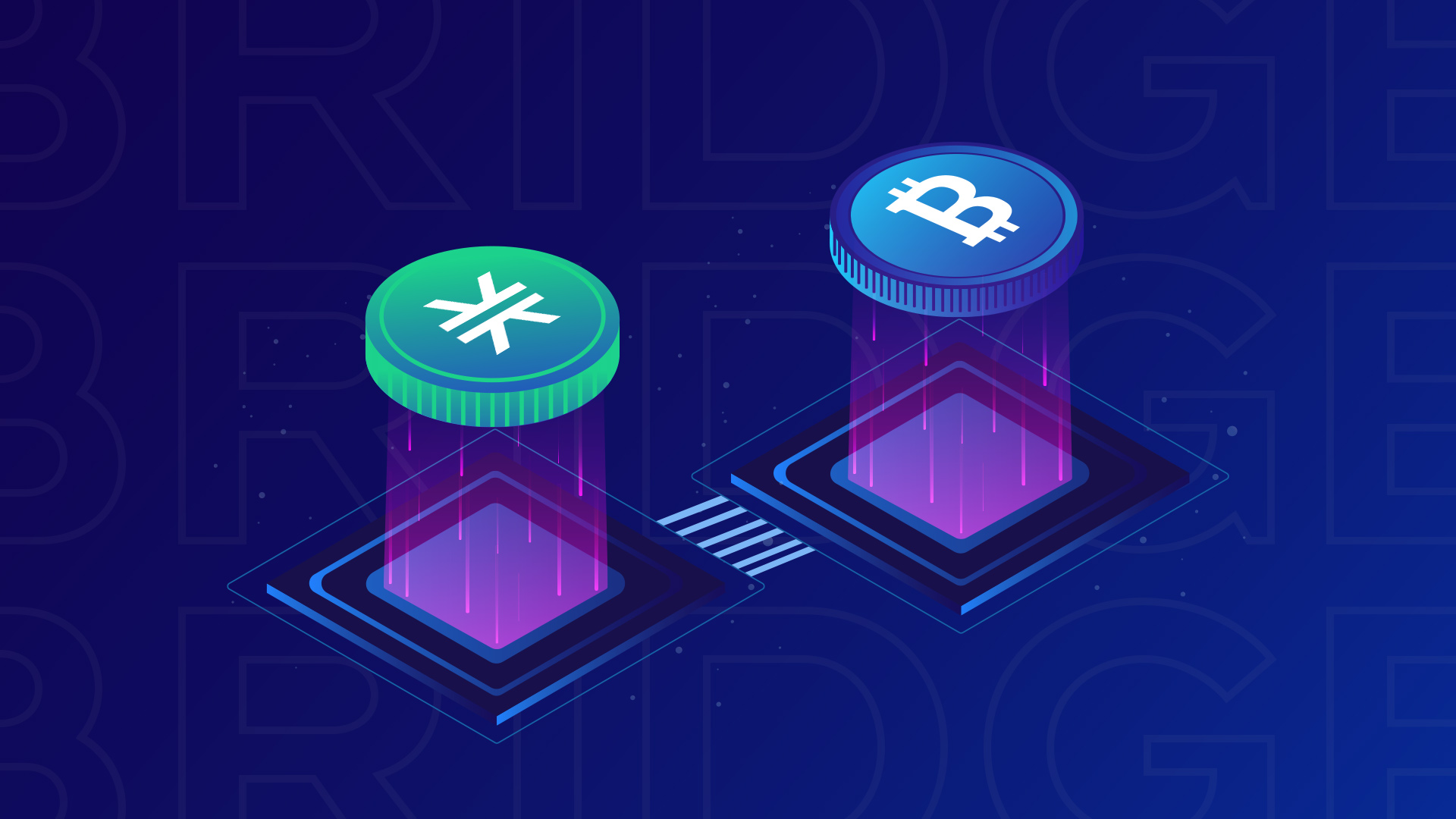Introduction
Welcome to the fascinating world of blockchain technology. Over the past decade, blockchain has emerged as one of the most transformative and disruptive technologies across various industries. From finance to healthcare, supply chain management to voting systems, blockchain has the potential to revolutionize how we store and transfer information securely and transparently.
So, what exactly is blockchain technology? In simple terms, blockchain is a decentralized and distributed ledger that records transactions across multiple computers or nodes. Unlike traditional centralized systems, where a single authority controls the database, blockchain enables peer-to-peer transactions without the need for intermediaries.
At its core, blockchain is built upon a series of blocks, each containing a list of transactions. Each block is connected to the previous block through a cryptographic hash function, forming a chain of blocks. These transactions are validated, encrypted, and added to the blockchain by a network of participants known as miners.
One of the key principles of blockchain technology is its immutability. Once a transaction is added to the blockchain, it becomes virtually impossible to alter or tamper with. This makes blockchain a highly secure and transparent system, as every transaction is permanently recorded and verified by multiple participants.
Blockchain technology is often associated with cryptocurrencies, such as Bitcoin and Ethereum. However, its potential extends far beyond digital currencies. Blockchain has the power to streamline business processes, enhance security, reduce fraud, and increase trust among participants.
In this article, we will delve deeper into the world of blockchain technology. We will explore how blockchain works, its key features, different types of blockchain, applications across industries, advantages, and disadvantages, and the future outlook for this exciting technology.
So, let’s embark on this journey and unravel the mysteries of blockchain technology.
Definition of Blockchain Technology
Blockchain technology is a decentralized and distributed ledger system that enables the secure and transparent recording of transactions across multiple computers or nodes. It is a revolutionary technology that eliminates the need for intermediaries and enhances trust among participants.
In a blockchain, transactions are grouped together into blocks, which are then added to the chain through cryptographic hashes. Each block contains a timestamp and a unique identifier, along with a list of transactions. These transactions are verified and validated by a network of participants known as miners.
One of the defining features of blockchain technology is its immutability. Once a transaction is added to the blockchain, it becomes virtually impossible to alter or tamper with. This is due to the cryptographic algorithms and consensus mechanisms used in blockchain networks, which ensure the integrity and security of the data.
Blockchain technology is often associated with cryptocurrencies, but its applications go beyond digital currencies. It can be used to securely store and transfer any type of digital asset, whether it’s financial transactions, real estate records, supply chain information, or healthcare data.
The decentralized nature of blockchain technology offers several benefits. It eliminates the need for intermediaries, reducing costs and increasing efficiency. It also enhances transparency, as all participants have access to the same information and can verify the validity of transactions. Additionally, blockchain technology provides enhanced security, as the data is distributed across multiple nodes, making it difficult for hackers to manipulate or compromise the system.
Overall, blockchain technology has the potential to transform various industries by revolutionizing the way we store, transfer, and manage data. Its decentralized and transparent nature makes it a promising solution for enhancing trust, efficiency, and security in a wide range of applications.
How Does Blockchain Technology Work?
Blockchain technology operates on the principles of decentralization, transparency, and cryptographic security. To understand how it works, let’s explore the key components and processes involved:
1. Distributed Ledger: At the core of blockchain technology is the concept of a distributed ledger. This ledger is maintained by a network of participants, each possessing a copy of the complete blockchain. Every transaction is recorded on the ledger and grouped into blocks.
2. Cryptographic Hashing: Each block contains a unique identifier called a cryptographic hash, which is generated using complex mathematical algorithms. This hash serves as a digital fingerprint for the block and is used to link it to the previous block in the chain.
3. Consensus Mechanism: Blockchain networks rely on consensus mechanisms to validate and agree on the state of the ledger. Popular consensus algorithms include Proof-of-Work (PoW) and Proof-of-Stake (PoS). These algorithms ensure that all participants agree on the validity of transactions before they are added to the blockchain.
4. Mining: Miners play a vital role in maintaining the blockchain. They are responsible for verifying and validating transactions, adding them to blocks, and solving complex mathematical puzzles to earn rewards. Miners compete against each other to add new blocks to the chain, ensuring the decentralization and security of the network.
5. Decentralization: Unlike traditional centralized systems, where a single authority controls the database, blockchain operates in a decentralized manner. There is no central authority governing the blockchain, and every participant has a copy of the entire blockchain, ensuring transparency and preventing a single point of failure.
6. Security: Blockchain technology uses cryptographic mechanisms to ensure the security and integrity of data. Once a transaction is added to the blockchain, it becomes virtually immutable, as changing a single block would require altering the entire chain, which is computationally infeasible.
7. Smart Contracts: Blockchain platforms often support the execution of smart contracts. These are self-executing contracts with predefined rules and conditions. Smart contracts enable the automation and execution of agreements without the need for intermediaries, further enhancing the efficiency and transparency of transactions.
By combining these components, blockchain technology creates a secure, transparent, and decentralized system for storing and transferring digital assets. It has the potential to revolutionize various industries by providing enhanced security, efficiency, and trust in transactions.
Key Features of Blockchain Technology
Blockchain technology offers several distinctive features that set it apart from traditional centralized systems. These key features contribute to its immense potential and appeal across various industries. Let’s explore some of the key features of blockchain technology:
1. Decentralization: One of the fundamental features of blockchain is its decentralized nature. Rather than relying on a central authority, such as a bank or a government, blockchain operates as a distributed network of nodes. This decentralization eliminates the need for intermediaries and enables peer-to-peer transactions, reducing costs and increasing efficiency.
2. Transparency: Transparency is a core principle of blockchain technology. All transactions recorded on the blockchain are visible to all participants in the network. This transparency ensures accountability and trust as all participants can verify the validity of transactions without relying on a third party.
3. Security: Blockchain uses advanced cryptographic algorithms to secure transactions and data stored on the blockchain. Once a transaction is added to the blockchain, it is virtually immutable, making it resistant to tampering and fraud. The decentralized nature of blockchain also makes it less vulnerable to attacks or single point failures.
4. Immutability: Immutability is a key feature of blockchain technology. Once a transaction is added to the blockchain, it cannot be altered or deleted. This ensures the integrity and permanence of the data stored on the blockchain, making it highly reliable and trustworthy.
5. Efficiency: Blockchain technology streamlines processes by eliminating the need for intermediaries and manual reconciliation. It enables faster and more efficient transactions as verification and validation are automated through the consensus mechanisms of the blockchain network.
6. Scalability: Blockchain technology has the potential to scale and accommodate a large volume of transactions. As the network grows, more nodes can participate in the verification and validation process, ensuring the scalability and robustness of the system.
7. Smart Contracts: Smart contracts are self-executing contracts with predefined rules and conditions encoded on the blockchain. They automate and enforce the execution of agreements, eliminating the need for intermediaries and reducing the potential for disputes.
8. Traceability: Blockchain provides a transparent and auditable trail of transactions, enabling the traceability of assets or goods in supply chains. This feature is particularly valuable in industries such as logistics, pharmaceuticals, and food production, where tracking the origin and movement of products is crucial.
These key features of blockchain technology make it a promising solution for various applications, including financial services, supply chain management, healthcare, voting systems, and more. As the technology continues to evolve, we can expect to see even more innovative use cases and advancements in the blockchain space.
Types of Blockchain Technology
Blockchain technology has evolved over the years, leading to the development of different types of blockchain networks. These networks vary in terms of their governance, consensus mechanisms, and access permissions. Let’s explore some of the common types of blockchain technology:
1. Public Blockchain: Public blockchains are open and permissionless networks where anyone can participate. They are decentralized, and the consensus is reached through mechanisms such as Proof-of-Work (PoW) or Proof-of-Stake (PoS). Public blockchains, like Bitcoin and Ethereum, allow anyone to read, write, and validate transactions, making them transparent and highly secure.
2. Private Blockchain: Private blockchains are restricted to a specific group of participants who are given permission to access and contribute to the blockchain. These networks are often used within organizations or consortiums to facilitate secure and efficient transactions among trusted parties. Unlike public blockchains, private blockchains have a centralized governance structure and are typically faster and more scalable.
3. Consortium Blockchain: Consortium blockchains are a hybrid between public and private blockchains. They are governed by multiple organizations or entities, who form a consortium to manage and maintain the blockchain network. Consortium blockchains offer a higher level of privacy compared to public blockchains while still benefiting from the distributed and decentralized nature of the technology.
4. Hybrid Blockchain: Hybrid blockchains combine the features of both public and private blockchains. They allow for both public and private transactions, where certain transactions can be visible to everyone while others are restricted to specific participants. Hybrid blockchains offer flexibility, allowing organizations to choose the level of privacy and transparency they require.
5. Permissioned Blockchain: Permissioned blockchains require participants to be granted access and permission to join the network. These blockchains are often used in enterprise settings where data privacy and security are critical. Permissioned blockchains offer faster transaction processing and are suitable for applications that require high performance and compliance with regulations.
6. Sidechains: Sidechains are separate blockchains that are connected to a main blockchain, also known as the parent chain. They enable the creation of scalable and specialized solutions while still benefitting from the security and decentralization of the parent chain. Sidechains can be used to test and implement new features or applications without affecting the main blockchain network.
These are just a few examples of the types of blockchain technology available today. Each type has its own strengths and is suited to different use cases and industry requirements. The choice of blockchain type depends on factors such as scalability needs, governance models, data privacy, and regulatory compliance.
As blockchain technology continues to evolve, we can expect to see more innovative variations and combinations of these types, catering to the diverse needs of businesses and organizations in the digital era.
Applications of Blockchain Technology
Blockchain technology has the potential to revolutionize numerous industries by offering secure, transparent, and efficient solutions. Let’s explore some of the key applications of blockchain technology:
1. Financial Services: One of the most well-known applications of blockchain technology is in the financial sector. Blockchain enables secure and fast peer-to-peer transactions without the need for intermediaries, reducing costs and streamlining processes. It has the potential to transform areas such as cross-border payments, remittances, smart contracts, and identity verification.
2. Supply Chain Management: Blockchain can enhance transparency and traceability in supply chains. By recording each step of a product’s journey on the blockchain, stakeholders can verify its origin, authenticity, and quality. This can help in combating counterfeiting, ensuring ethical sourcing, improving logistics, and optimizing inventory management.
3. Healthcare: Blockchain technology can revolutionize healthcare by securely storing and sharing patient records, ensuring privacy and interoperability. It can also streamline clinical trials, enable secure sharing of medical data between healthcare providers, and improve medical supply chain management.
4. Voting Systems: Blockchain offers a secure and transparent platform for voting systems. It can prevent voter fraud, ensure accurate vote counting, and increase trust in the electoral process. Blockchain-based voting systems can significantly improve the integrity and efficiency of democratic processes.
5. Real Estate: Blockchain can streamline real estate transactions by digitizing titles, automating property transfers, and ensuring transparency in ownership records. It can also enable fractional ownership and the creation of decentralized peer-to-peer marketplaces for buying and selling properties.
6. Intellectual Property: Blockchain can revolutionize the management of intellectual property rights, ensuring secure ownership and tracking of digital assets such as patents, copyrights, and trademarks. It enables creators to prove ownership and protect their intellectual property without the need for intermediaries.
7. Energy Management: Blockchain can facilitate peer-to-peer energy transactions, allowing individuals and organizations to trade renewable energy directly. It can enable better management of energy consumption, tracking supply chain sustainability, and facilitating the integration of renewable energy sources into the grid.
These are just a few examples of how blockchain technology is being applied across different industries. As the technology continues to evolve and mature, we can expect to see even more innovative use cases and widespread adoption of blockchain solutions.
Advantages and Disadvantages of Blockchain Technology
Blockchain technology offers several advantages that make it a promising solution for various applications. However, like any technology, it also has its limitations. Let’s explore the advantages and disadvantages of blockchain technology:
Advantages:
- Enhanced Security: Blockchain offers a high level of security due to its decentralized and immutable nature. The use of cryptographic algorithms ensures the integrity and privacy of transactions, making it difficult for hackers to tamper with the data.
- Transparency and Trust: Blockchain provides transparency by recording all transactions on a shared ledger that is visible to all participants. This transparency enhances trust among participants, as they can independently verify the authenticity of transactions without relying on intermediaries.
- Reduced Costs and Intermediaries: By eliminating intermediaries and streamlining processes, blockchain technology can significantly reduce costs associated with transactions, such as fees and administrative overhead. This is particularly beneficial in industries such as finance, supply chain management, and real estate.
- Faster and Efficient Transactions: Blockchain enables fast and efficient peer-to-peer transactions by automating processes and removing the need for manual reconciliation. This reduces transaction times and increases operational efficiency.
- Immutable and Auditable: Once a transaction is added to the blockchain, it cannot be altered or deleted, ensuring the integrity and immutability of the data. This makes blockchain a reliable and auditable source of information.
Disadvantages:
- Scalability: As the size of the blockchain grows, scalability becomes a challenge. The decentralized nature of blockchain requires all participants to validate and store every transaction, which can lead to slower processing times and increased storage requirements.
- Energy Consumption: Some blockchain networks, particularly those that use Proof-of-Work consensus algorithms, consume a significant amount of computational power and energy. This raises concerns about the environmental impact of blockchain technology.
- Regulatory Challenges: The regulatory landscape surrounding blockchain technology is still evolving. Different jurisdictions have varying laws and regulations regarding cryptocurrencies and blockchain applications. This can pose challenges for businesses seeking to adopt blockchain solutions.
- Privacy Concerns: While blockchain offers transparency, privacy can be a concern. While transactions can be pseudonymous, the underlying data recorded on the blockchain can potentially reveal sensitive information. Balancing transparency with privacy is an ongoing challenge in blockchain development.
- Technological Complexity: Implementing and managing blockchain technology requires technical expertise and infrastructure. The complexity of blockchain development can make it challenging for organizations to adopt and integrate blockchain into their existing systems.
Despite the limitations, the advantages of blockchain technology continue to drive its adoption and innovation. As the technology evolves and addresses these challenges, it is expected to have a profound impact on various industries, reshaping how we store, transfer, and manage data.
Future Outlook for Blockchain Technology
The future outlook for blockchain technology is incredibly promising as its potential applications continue to expand and evolve. Here are some key trends and predictions for the future of blockchain:
1. Mass Adoption: As blockchain technology becomes more mature and refined, we can expect to see increased adoption across industries. Businesses are recognizing the benefits of blockchain in terms of security, transparency, and efficiency, and will continue to explore and implement blockchain solutions to streamline operations and enhance trust.
2. Interoperability: Interoperability will play a crucial role in the future of blockchain. As various blockchain networks and platforms emerge, there will be a need for seamless integration and interoperability between them. Projects focusing on creating protocols and standards to promote cross-chain communication are already underway.
3. Integration with Emerging Technologies: Blockchain technology will likely integrate with other emerging technologies such as artificial intelligence, Internet of Things (IoT), and machine learning. These synergies can enhance the capabilities and applications of blockchain, enabling solutions with greater automation, data analytics, and predictive capabilities.
4. Government Adoption: Governments are beginning to recognize the potential of blockchain technology in improving public services, increasing transparency, and reducing fraud. We can expect to see increased government adoption of blockchain for various applications such as identity management, land registry, healthcare records, voting systems, and customs and taxation processes.
5. Tokenization of Assets: The tokenization of real-world assets, such as real estate, art, and intellectual property, will become more prevalent. Blockchain can facilitate the fractional ownership, trading, and transfer of these assets, unlocking liquidity and creating new investment opportunities.
6. Scalability Solutions: As blockchain networks strive to overcome the scalability challenges, there will be a focus on developing and implementing advanced scalability solutions. Layer 2 solutions, such as sidechains and off-chain transactions, as well as advancements in consensus algorithms, will address the scalability concerns and allow for the processing of a larger number of transactions in a more efficient manner.
7. Enhanced Privacy: As privacy concerns regarding blockchain technology persist, projects are working on creating privacy-focused solutions. Innovations in privacy-preserving techniques, such as zero-knowledge proofs and secure multiparty computation, will address these concerns and enable confidential transactions on the blockchain.
8. Sustainability Measures: As energy consumption becomes a concern, blockchain networks will adopt more eco-friendly consensus algorithms and energy-efficient infrastructure. The integration of renewable energy sources and the development of more energy-efficient blockchain networks will contribute to a more sustainable blockchain ecosystem.
With ongoing research, investments, and collaboration within the blockchain community, the future is promising for this transformative technology. As more use cases are discovered, regulations are established, and technological advancements are made, blockchain technology will continue to revolutionize industries, enhance transparency, and reshape how we interact with digital assets and information.
Conclusion
Blockchain technology has emerged as a pioneering force that has the potential to revolutionize various industries. With its decentralized nature, immutability, and transparency, blockchain offers secure and efficient solutions for storing and transferring digital assets. From finance to supply chain management, healthcare to voting systems, blockchain is poised to disrupt traditional systems and enhance trust among participants.
As we have explored in this article, blockchain technology has several advantages. It enhances security, reduces costs, increases transparency, and improves the efficiency of transactions. Blockchain also has its limitations, such as scalability challenges and regulatory considerations, but efforts are being made to address these issues as the technology continues to evolve.
The future outlook for blockchain technology is incredibly promising. We can expect to see increased adoption and integration of blockchain across industries. Governments are recognizing the potential of blockchain for improving public services, and businesses are exploring blockchain solutions to streamline operations and enhance trust. Interoperability, integration with other emerging technologies, tokenization of assets, and scalability solutions will be key trends shaping the future of blockchain.
However, the full potential of blockchain technology has yet to be realized. As the technology continues to mature and address its limitations, we can expect to see even more innovative use cases and advancements. It is an exciting time for blockchain enthusiasts, researchers, and businesses as they collaborate to unlock the true potential of blockchain technology.
In conclusion, blockchain technology is poised to reshape industries, enhance transparency, and transform the way we store and transfer digital assets. With its ability to offer secure, transparent, and efficient solutions, blockchain has the potential to revolutionize various sectors and create a more inclusive and decentralized future.

























